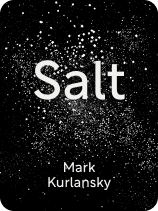

This article is an excerpt from the Shortform book guide to "Salt" by Mark Kurlansky. Shortform has the world's best summaries and analyses of books you should be reading.
Like this article? Sign up for a free trial here.
Have there ever been wars over salt? Why would people fight over salt?
Salt played a major role in rebellions and wars. In Salt, Mark Kurlansky details the conflict over salt played in the American Revolution, and the role it played in the Indian Independence Movement.
Continue reading for two major examples of wars over salt.
Power Struggles Over Salt Fueled Rebellions and Wars
Kurlansky makes clear that throughout history, people in colonized regions often resisted empires’ control over salt industries. They staged rebellions (which often turned into wars) to demand that empires grant them autonomy over salt production and profits. Let’s look at two examples of rebellions and wars over salt to emphasize how important the commodity really is.
Example 1: The American Revolution
According to Kurlansky, the American-British conflict over salt was one of the catalysts for the American Revolutionary War. Let’s trace the events that led to this war.
First, in the late 1600s, the British noticed and grew worried about self-reliance among American colonists. Many of these colonists were producing their own salt, which threatened the British ideal of how a colonial relationship should work: one in which the colonists depended on Britain and sold all their commodities to Britain.
To discourage this self-reliance and trade, the British took two actions that increased American dependence on British salt. First, they made British salt cheaper than colony-produced salt so that colonists would buy British salt instead. Second, the British forbade colonists from trading salt with foreigners.
Kurlansky argues that Americans’ anger over British control of their salt production and trade was one of the factors that contributed to the tension between Britain and the American colonists—tension that eventually boiled over into war. In the mid-1700s, Britain sensed American colonists’ desires for independence, so they enacted taxes and tariffs to discourage American trade with foreigners, and they stationed troops in Boston to quell any American resistance. In 1775, enraged and armed American colonists fired on these troops, beginning the American Revolutionary War.
Example 2: The Indian Independence Movement
According to Kurlansky, India’s independence movement also began as a conflict over salt production. The conflict started brewing in the 18th century when the British worried that the high-quality salt produced in India would threaten the profits of salt produced in England. To prevent this, they established a British monopoly over salt made by Indian saltworks, requiring Indian salt producers to sell all their salt to the British. Indian salt harvesters staged a rebellion against this monopoly in 1817 by attacking British-controlled saltworks in India.
Indian resistance to Britain’s control of salt production reached new heights in the early 1900s when Indians grew upset about the high tax Britain required them to pay on salt. The Indian Legislative Assembly demanded that Britain reduce this tax, but Britain refused. Mahatma Gandhi began organizing Indians to engage in nonviolent resistance against British control of India, and one of his best-known efforts was his 1930s salt campaign.
Gandhi’s salt campaign kicked off the Indian Independence Movement. He and his followers walked nearly 250 miles along the Indian coastline, gathering sea salt—which was illegal under British law. Within a week, the salt campaign became a national movement of over 100,000 Indians. British police responded to salt campaigners’ civil disobedience with arrests and brutal violence. But the campaign worked: In the early 1930s, the British signed a pact promising to release political prisoners and permit Indians to collect sea salt. According to Kurlansky, this pact and Gandhi’s campaign paved the way for Indians to secure their independence in 1947.

———End of Preview———
Like what you just read? Read the rest of the world's best book summary and analysis of Mark Kurlansky's "Salt" at Shortform.
Here's what you'll find in our full Salt summary:
- The role salt played in driving innovation, building empires, and provoking rebellions
- Why salting food isn’t just about improving its flavor
- How salt played an important role in several independence movements






